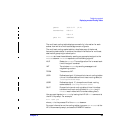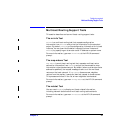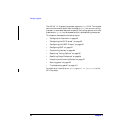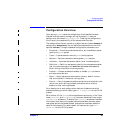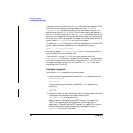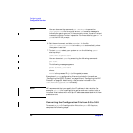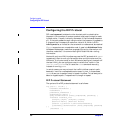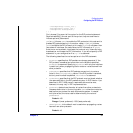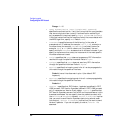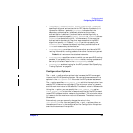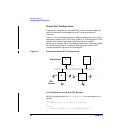
Configuring gated
Configuration Overview
Chapter 3 47
3. Add statements for any additional configuration information. See
“Customizing Routes” on page 90, “Specifying Tracing Options” on
page 92, and “Specifying Route Preference” on page 94 for other
configuration options.
In particular, you may want to prevent gated from deleting
interfaces from the routing table when gated does not receive
routing protocol information from that interface. To do this, insert
passive interface definitions in the interfaces statements. For
example:
interfaces {
interface all passive ;
};
:
:
<protocol statements follow>
4. If you normally use default routes, you must configure a static
default route in the gated configuration file. If the default route is a
gateway node, add the following entry to /etc/gated.conf (enter
the gateway node’s IP address for
gateway_IP_Address
):
static {
default gateway
gateway_IP_Address
retain ;
};
The default route may be a local interface, such as in topologies that
include a proxy ARP server on the local network. If the default route
is a local interface, add the following entry to /etc/gated.conf:
static {
default interface
local_IP_Address
retain ;
};
The
local_IP_Address
is the local system’s IP address of the
interface or network interface name (that is, lan0, lan1, and so on)
that acts as the default route. If you use a proxy ARP server, this is
the local address of the interface attached to the same network as the
proxy ARP server.
See “Customizing Routes” on page 90 and the section covering
“Common Problems” on page 104 in the section “Troubleshooting
gated” on page 101 for more information.
5. To check for syntax errors in the configuration file, run gated with
the -c or -C option (gated exits after parsing the configuration file).



